#TempleArchitecture
Explore tagged Tumblr posts
Text

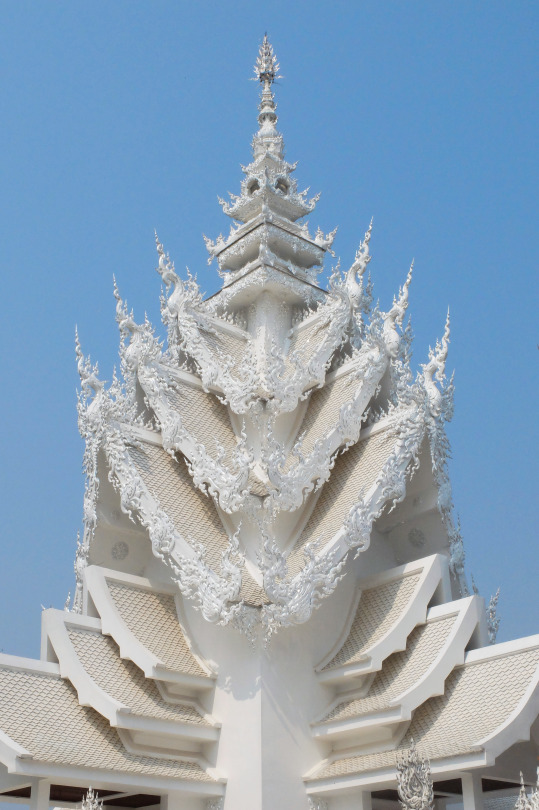
#WatRongKhun#WhiteTemple#temple#templearchitecture#chiangrai#thailand#travel#travelgram#travelphotography#fujifilm#fujifilmx20#white temple#temple architecture#architecture photography#archilovers#architecturephotography#architecture
16 notes
·
View notes
Text
youtube
ప్రపంచంలోనే అతి పెద్ద విష్ణు దేవాలయం? సోమనాథపుర దేవాలయం!
Hey guys, ఈ రోజు మనం సోమనాథపురలోని, కేశవ ఆలయం అనే పురాతన ఆలయంలోకి వెళ్తున్నాము, ఇది అద్భుతమైన ఆలయం, ఇది దాని crazy శిల్పాలు మరియు వాస్తుశిల్పానికి కూడా చాలా ప్రసిద్ధి చెందింది. So, లోపలికి వెళ్లి ఇక్కడ ఏమి దొరుకుతుందో చూద్దాం రండి? ఇది ఏంటీ? ఇది ఏంటని మీరు ఊహించగలరా? ఇది విష్ణువు యొక్క అవతారం, And ఇది ఒక జంతువు అని మీరు చూడవచ్చు, కానీ ఇది ఏ జంతువు? ఇది ఒక చేప, ఇదే విష్ణువు యొక్క మొట్టమొదటి అవతారం అయిన మత్స్య అవతారం. ఈ చేప పెదవులను చూడండి, ఇది చేపే అనడంలో ఎటువంటి సందేహం లేదు.
And చేపలకు eyelashes ఉండవు, వాటికి కనురెప్పలు కూడా ఉండవు. అందుకే శిల్పి కనురెప్పలను మరియు eyelashesను చెక్కలేదు. మీరు ఇక్కడ ముఖాన్ని extend చేస్తే, అది సరిగ్గా చేపలా కనిపిస్తుంది. ఇది చాలా అసాధారణమైన మత్స్య శిల్పం, ఎందుకంటే, మత్స్య శిల్పాలన్నింటిలోనూ, మీరు విష్ణువును, చేప యొక్క దిగువ శరీరంతో చూస్తారు. కానీ సోమనాథపుర శిల్పాలు, ఈ శైలిలో చాలా అద్భుతంగా ఉన్నాయి; అవి నిబంధనల నుండి పూర్తిగా భిన్నంగా ఉంటాయి. అందుకే వారు ఇక్కడ చేపలను పూర్తి కాళ్ళతో చెక్కారు. శిల్పుల అభిప్రాయం ప్రకారం చూసుకుంటే, విష్ణువు యొక్క ఈ రూపంలో, కేవలం ఒక చేప తల మాత్రమే ఉంది - మిగతావన్నీ మానవులే. అలాగే ఈ next చెక్కడాన్ని డీకోడ్ చేయడం మరింత కష్టం. ఇది చాలా సారూప్యమైనదాన్ని చూపిస్తుంది, మీకు ప్రాచీన భారతీయ గ్రంథాలు తెలియకపోతే, మీరు దానిని చేప లేదా పంది అని కొట్టిపారేయవలసి ఉంటుంది. కానీ ఇది కూర్మ భగవంతుడు, ఒక తాబేలు. ఇది చూడ్డానికి చేపలగానే కనిపిస్తుంది, కానీ ఈ నోరు చేప కంటే differentగా ఉంది. ఒకప్పుడు, ఇది దాదాపు roundగా, ఉబ���బిన పెదవులు ఉండేవి, ఇప్పుడు పదునైన గీతగా మారిపోయాయి.
And ఈ ముక్కు రంధ్రాలు పదునుగా మరియు ఎలా పైకి pointing చేస్తున్నాయో చూడండి. ఇది నిజంగా తాబేలు అని వెల్లడించే వివరాలు. అవతారాలను మరియు వాటి క్రమాన్ని గుర్తుంచుకోవడంలో మీకు ఇబ్బంది ఉంటే, పరిణామ సిద్ధాంతాన్ని గుర్తుంచుకోండి - మొదట చేప వచ్చింది, తరువాత తాబేలు వచ్చింది, ఇది ఉభయచర జీవి. So, మూడవ అవతారం ఏంటీ? మూడవది వరాహ అవతారం. ఇది ఎలుక లాంటిది - చాలా మంది దీనిని పంది అని పిలుస్తారు, కానీ ఇది ఎలుక, ఇది పరిణామంలో తదుపరి దశ.దురదృష్టవశాత్తు, ముఖం కొద్దిగా దెబ్బతింది, కానీ అతను భూమిని పట్టుకున్నాడు చూడండి. ఇది ఒక జియోయిడ్ ఆకారం. భూమి పూర్తిగా గుండ్రంగా లేదు - ఇది ఖచ్చితంగా ఇంత deviate అవ్వలేదు, కానీ అది కూడా పూర్తిగా గుండ్రంగా లేదు చూడండి. So, పురాతన నిర్మాణదారులకు, భూమి పూర్తిగా గుండ్రంగా లేదని తెలుసు. కానీ వరాహుడికి ఇప్పుడు eyelashes develope అయ్యాయి. అతని కళ్ళును చూడండి, అవి గుండ్రంగా లేవు; అవి ఒక ఆకారంలోకి మారాయి, వాటికి eyelashes కూడా ఉన్నాయి చూడండి. తాబేళ్లకు eyelashes ఉంటాయా? ఉండవు.
సాధారణంగా, eyelashes ఒక రకమైన క్షీరదం లాంటివి. కూర్మ కళ్ళు మధ్యలో గుండ్రంగా ఉంటాయి, కానీ ఈ ఆకారం బయట ఏర్పడటం మీరు చూస్తారు. చేపలో, అది పూర్తిగా గుండ్రంగా ఉంది, తాబేలులో, అది ఇంకా గుండ్రంగానే ఉంది, కానీ ఒక ఆకారం ఏర్పడటం ప్రారంభమైంది. కానీ దానికి eyelashes మరియు eyebrows ఉన్నాయా? లేదు. ఎందుకు? ఎందుకంటే అది ఇంకా క్షీరదం కాలేదు. eyebrows, eyelashes మరియు eyelids క్షీరద జంతువులు. వరాహలో, కళ్ళకు ఏమి జరిగిందో చూడండి - కళ్ళు ఇప్పుడు పూర్తిగా ఆకారంలో ఉన్నాయి. అక్కడ eyelids ఉన్నాయి, బహుశా eyelashes, మరియు eyebrows కూడా ఉన్నాయి. వరాహుని ముక్కును ఉద్దేశపూర్వకంగానే నాశనం చేశారు, కాబట్టి దీని కారణంగా మనం కొన్ని విలువైన వివరాలను కోల్పోయాము. And ఇక్కడ విష్ణువు యొక్క 10 అవతారాలు మాత్రమే కాకుండా, ఈ ఆలయంలో విష్ణువు యొక్క 24 విభిన్న రూపాలు చెక్కబడ్డాయి. కానీ ఈ ఆలయంలో ఎన్ని శివుని శిల్పాలు కనిపిస్తున్నాయి? Zero.
అవును, ఈ పురాతన ఆలయంలో, శివుని లేదా అతని అవతారాల శిల్పాలు ఒక్కటి కూడా చెక్కబడలేదు. ఇలాంటి ఆలయం దొరకడం చాలా అరుదు. కానీ ఇక్కడ ఈ విష్ణువును చూడండి - ఇది స్పష్టంగా కనిపించకుండా దాగి ఉన్న ఒక కళాఖండం. ఇది విష్ణువు యొక్క actual sizeను చూపిస్తుంది. ఎలా? మీరు విష్ణువు ఒక కాలుతో ఇలా కూర్చుని ఉన్నట్లు చూడవచ్చు, అలాగే తన ఒడిలో, తన భార్య లక్ష్మిని కూడా చూడవచ్చు, ఆమె తన ఒక కాలును కింద వేలాడదీస్తూ కూర్చుంది. కానీ ఆమె కాలు, ఒక పువ్వు మీద ఆనించి ఉంది చూడండి, ఆమె బరువు కారణంగా, ఆ పువ్వు వంగి, రాలిపోబోతోంది. కానీ ఇక్కడ అందం ఏంటంటే, ఒక ఏనుగు వచ్చి, ఆ పువ్వు పడిపోకుండా చూసుకోవడానికి, దాని తొండంతో పువ్వును పట్టుకుంటుంది. ఇప్పుడు, మీరు విష్ణువు యొక్క sizeను మరియు ఏనుగు యొక్క sizeను పోల్చవచ్చు, ఇప్పుడు విష్ణువు యొక్క నిజమైన sizeను మీరే అర్థం చేసుకోవచ్చు - అతను ఒక giant.
#keshavatemple#somnathpurtemple#praveenmohan#vishnuavatars#ancientindia#vishnu#hindutemples#indianheritage#templearchitecture#sanatanadharma#stonesculptures#indiansculpture#hoysalaarchitecture#templesculpture#Youtube
0 notes
Text
ಮಧುರೈಗೆ ಹೋದ್ರೆ ತಪ್ಪದೇ ಈ ದೇವಾಲಯ ನೋಡಿ..!!| Rajeev Hegde| Sanchari |
Exploring the Timeless Heritage of Tamil Nadu – From Keeladi to Madurai
In our latest episode of Sanchari, we embark on an immersive journey through Tamil Nadu — a land where history, spirituality, and culture come alive. From the archaeological wonders of Keeladi, where traces of the Iron Age civilization dating back 2600 years have been unearthed, to the architectural brilliance of Madurai’s Meenakshi Temple, our experience was nothing short of extraordinary.
We explored how the Tamil Nadu government is preserving heritage by transforming historical sites into well-maintained museums that instill pride among locals and tourists alike. At Keeladi, the mini-theatre, multilingual displays (including Kannada), and educational books were impressive examples of smart cultural tourism.
youtube
The journey also took us through various temple towns like Thanjavur, Rameshwaram, Srirangam, and Madurai, where we witnessed the grandeur of Chola and Pandya architecture. The Thousand Pillar Hall and Nataraja Mantapa in Madurai left us spellbound, reminding us of the depth of craftsmanship that existed centuries ago.
But what made this trip even more special was the authentic Tamil food. From local Idlis and Dosas to three varieties of chutney served in small family-run hotels — we tasted the heart of Tamil Nadu. What stood out was the participation of women as food servers, adding a layer of community-driven economy and warmth.
Through this journey, we also addressed sensitive themes around identity, politics, and preservation of history, reflecting on how every culture chooses to showcase its past.
This episode is a heartfelt tribute to Tamil Nadu’s temples, traditions, and taste. Watch it, plan your next journey, and discover how travel can change the way you see history.
👉 Watch the full episode now on Gaurish Akki Studio YouTube Channel.
#TamilNaduTravel#ThanjavurDiaries#CholaDynasty#BrihadeeswararTemple#KumbakonamTemples#TempleArchitecture#SpiritualTravel#IndianHeritage#CulturalTourism#HiddenGemsIndia#SouthIndiaTemples#AuthenticTravel#TravelWithPurpose#RoadTripIndia#OffbeatIndia#TravelVlogIndia#SpiritualJourney#GauriShaki#RajeevHegde#HeritageWalks#GarbhagudiExperience#LocalCultureIndia#TempleStories#IndiaUncovered#MindfulTravel#AncientTemplesIndia#templearchitecture#SouthIndiaHeritage#sundareshwaratemple#Youtube
0 notes
Text
Mela Kheer Bhawani:A Symbol of Faith and Unity

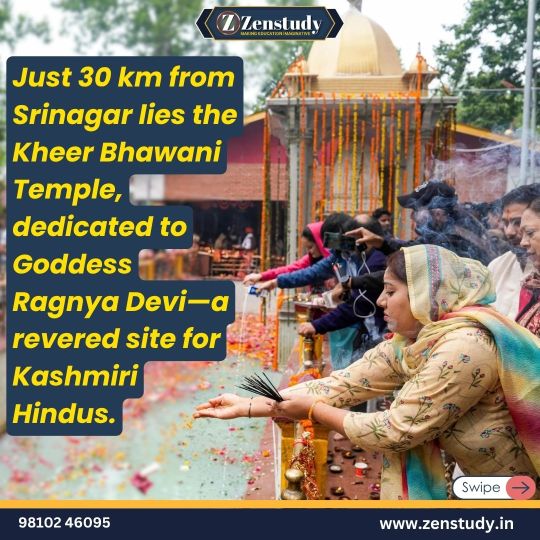


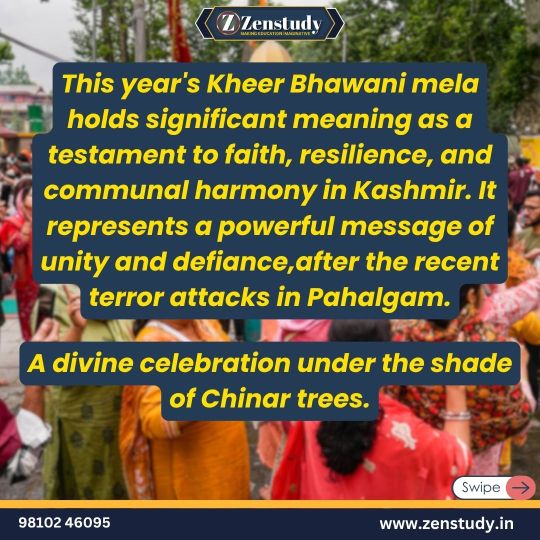

Mela Kheer Bhawani, held annually at the sacred temple of Goddess Ragnya Devi in Tulmulla, Ganderbal (J&K), is more than a religious gathering—it's an emotional reunion of faith, culture, and tradition. Pilgrims, especially Kashmiri Pandits, gather to offer kheer and prayers, celebrating resilience and peace amidst the scenic beauty of Kashmir. The temple's spring, said to change colors as divine signs, adds spiritual wonder to the celebration.
🌐 Website: https://zenstudy.in/ 📲 Telegram: https://t.me/Zenstudyltd
#KheerBhawani#MelaKheerBhawani#KashmirFestivals#UPSC2025#IndianCulture#IndianTradition#ZenStudy#TulmullaTemple#UPSCPrelims2025#CurrentAffairs2025#TempleArchitecture#UPSCArtAndCulture#GoddessRagnya#KashmirTourism#KashmiriPandits#CulturalHeritageIndia#IndianSpirituality#CivilServicesExam#UPSCMotivation#HinduFestivals#KashmirValley#SacredPlacesIndia#FaithInIndia#IndianPilgrimage#RitualsAndTradition#IndianReligiousSites#GS1ArtCulture
0 notes
Text
Are Temples Built on Energy Centers? Scientific Proof Behind Their Location

👉 Unveiling the Secrets of Temple Locations
Temples have stood the test of time, not just as places of worship but as centers of immense spiritual and cosmic energy. Across civilizations, from India to Egypt, from Mesoamerica to Greece, sacred structures have been built with meticulous precision, aligned with celestial bodies and natural energy grids. But what makes these temples feel so serene, powerful, and charged with an almost mystical force? Could there be a deeper scientific reason behind their placements? This article delves into the fascinating intersection of ancient wisdom and modern science, uncovering the truth behind temple locations. By decoding sacred geography, vibrational resonance, and geomagnetic fields, we aim to answer a question that has intrigued many for centuries: Are temples truly built on energy centers? 👉 The Ancient Mystery: Why Do Temples Often Feel So Powerful and Serene? Across India, devotees and visitors alike experience an undeniable sense of peace when entering a temple. This sensation is not merely psychological—it stems from a sophisticated interplay of natural energies, architectural design, and vibrational frequencies that impact the human body and mind. 🌟 The Subtle Energy Fields and Earth’s Geomagnetic Influence Temples are often situated on or near natural energy centers—regions where Earth's magnetic fields, ley lines, or underground water currents intersect. These areas are believed to be charged with high-frequency vibrations, which influence human consciousness, enhance meditation, and promote well-being. 🔹 Scientific Perspective: Researchers studying Earth's geomagnetic field have found that certain geographical locations emit higher levels of electromagnetic energy. Ancient civilizations may have intuitively understood these hotspots, aligning their sacred structures accordingly. 🔹 Example: Kailasa Temple, Ellora The Kailasa temple, carved from a single rock, aligns with natural geomagnetic currents, creating an environment that induces tranquility and heightened awareness. Some geologists suggest that the choice of this site was not random but based on natural energy mapping. 🌟 Why People Feel Energized After Visiting a Temple Unlike regular buildings, temples are architecturally designed to amplify cosmic energy. Every element, from the sanctum sanctorum (garbhagriha) to the tower (vimana), is constructed to create a high-energy environment. The very act of walking through a temple premises initiates a subtle transformation in the devotee’s bioelectromagnetic field. 🔹 Scientific Explanation: - The temple’s placement on energy nodes increases the intensity of geomagnetic fields. - Rituals like lighting camphor and offering flowers create a positive bioenergetic loop. - The high concentration of natural materials (granite, quartz, copper) enhances ionic balance, making temples a hub of vibrational harmony. Real-Life Example: Many devotees report feeling a tingling sensation, deep relaxation, or even a surge of energy when they meditate inside temple sanctuaries, especially in temples like Tirupati Balaji or Kedarnath. These experiences suggest a real interaction between human consciousness and energy hotspots. 👉 Could There Be a Deeper Scientific Reason Behind Their Locations? Temples are not randomly placed; they are built following meticulous calculations based on astronomy, sacred geography, and geomagnetic mapping. But how did ancient architects know where to construct these powerhouses of energy? 🌟 The Role of Sacred Geography in Temple Placement Sacred geography is the ancient science of identifying high-energy zones. In Hinduism, Vedic scholars mapped the land using cosmic alignments, river flows, and natural electromagnetic fields. 🔹 Examples of Temple Alignment with Earth’s Energy Grid: - Kashi Vishwanath (Varanasi) – Built at the confluence of multiple ley lines and underground water streams. - Rameswaram Temple – Positioned along the Tropic of Cancer, resonating with cosmic frequencies. - Meenakshi Temple (Madurai) – Analyzed to have geobiological advantages due to underground crystal formations. 🌟 Ley Lines and Earth’s Electromagnetic Network Many sacred sites across the world, including Indian temples, align with ley lines—hypothetical energy channels crisscrossing the planet. 🔹 Scientific Research: Studies by geophysicists indicate that ancient structures, from the Great Pyramids to the Konark Sun Temple, were built on intersections of these energy lines, maximizing geomagnetic influence on human physiology. 🔹 Modern Studies on Bioelectromagnetic Interaction: - A 2019 study on ancient temple architecture found that certain temple locations exhibit unusually high Schumann resonance (Earth’s natural frequency). - Higher Schumann resonance is linked to mental clarity, deep states of meditation, and enhanced intuition. Temples are more than places of worship—they are energy amplifiers, meticulously placed to tap into Earth's energetic blueprint. 👉 Exploring the Intersection of Ancient Wisdom and Modern Science This article serves as a bridge between traditional knowledge and contemporary scientific validation. By unraveling the truth behind temple placements, we hope to shed light on how these sacred spaces can: 🌟 Enhance Human Consciousness: Temples help synchronize brain waves with natural frequencies, promoting mental peace. 🌟 Balance Environmental Energy: They act as stabilizers for geomagnetic anomalies, creating a bioenergetic equilibrium. 🌟 Offer Healing Benefits: Temples are now being studied for their potential in alternative medicine and vibrational therapy. 🌟 Practical Implications: What We Can Learn Today The principles behind temple placement are not just relics of the past—they can be applied to modern urban planning, holistic health, and environmental sustainability. 🔹 Energy-Efficient Architecture: Using natural materials and cosmic alignments for building sustainable structures. 🔹 Wellness and Meditation Centers: Reviving ancient principles for mental well-being in cities. 🔹 Geo-Spiritual Mapping: Utilizing sacred geography for ecological balance and tourism. Final Thought: If we start viewing temples not just as religious monuments but as scientific marvels of energy engineering, we might unlock profound insights into human consciousness and planetary healing. ✅ Temples are built on high-energy zones, aligning with geomagnetic fields and cosmic patterns. ✅ Scientific studies validate the role of temple architecture in influencing human bioelectromagnetic states. ✅ Ancient wisdom on sacred geography can revolutionize modern urban design, healing spaces, and energy-efficient construction. Let’s rediscover the wisdom behind temple placements and integrate it into modern science for a better world!
👉👉 The Concept of Sacred Geography
Throughout history, sacred geography has played a pivotal role in the placement of temples, pyramids, and megalithic structures across the world. This ancient knowledge is based on the idea that the Earth is not just a physical entity but a living system of energy grids, ley lines, and vibrational hotspots. By understanding and harnessing these natural forces, civilizations have created powerful spiritual centers that influence human consciousness, healing, and even socio-economic prosperity. The concept of sacred geography is deeply rooted in both spiritual traditions and emerging scientific studies that seek to decode why ancient cultures built their most revered sites in precise locations. Were they simply following religious customs, or did they have a profound understanding of the Earth’s natural energy flow? Let’s explore the intricate relationship between temple locations, Earth’s energy fields, and similar practices across ancient civilizations. 👉 Defining Sacred Geography: Understanding the Spiritual Mapping of the Earth Sacred geography is the study of specific locations on Earth that possess unique energetic properties, often referred to as power centers. These areas are believed to be naturally charged with higher frequencies, geomagnetic activity, and vibrational resonance that can affect the mind, body, and spirit. 🌟 Core Principles of Sacred Geography: 🔹 The Earth is crisscrossed with ley lines—invisible energy channels that link sacred sites. 🔹 Certain geographical locations are naturally high in geomagnetic activity, influencing brain waves and consciousness. 🔹 Temples, pyramids, and other structures amplify and harness these natural frequencies to create a spiritual experience. 🔹 Astronomical alignments and cosmic cycles play a key role in the positioning of sacred sites. 🌟 Evidence of Sacred Geography in India India’s ancient temple builders did not randomly select locations; they followed precise geomantic calculations based on Vedic knowledge, astronomy, and energy mapping. 🔹 Kanchipuram, Tamil Nadu – Known as a “City of Temples,” Kanchipuram’s layout aligns with cosmic patterns and geomagnetic nodal points. 🔹 Jagannath Temple, Puri – Positioned at an energy hotspot where geomagnetic field fluctuations have been scientifically observed. 🔹 Vaishno Devi Shrine, Jammu – Built within a natural cave at an altitude that corresponds to bioelectric field enhancement, promoting spiritual elevation. These temple locations suggest an ancient understanding of Earth’s vibrational energy, which modern science is only beginning to explore. 👉 Ancient Civilizations: Similar Practices in Other Cultures The concept of aligning structures with Earth’s energy is not unique to India. Ancient civilizations worldwide followed sacred geography principles, constructing their most significant spiritual and ceremonial centers in places that resonate with the Earth’s vibrational energy. 🌟 The Egyptian Pyramids: Geometric Resonance and Earth’s Energy The Great Pyramid of Giza is one of the most precisely aligned structures on Earth. It is positioned at the exact intersection of the longest line of latitude and the longest line of longitude—a fact that suggests intentional geomantic placement. 🔹 Electromagnetic Properties: Researchers have found that the Great Pyramid naturally concentrates electromagnetic energy in its chambers, particularly at the King’s Chamber, which is believed to act as an energy amplifier. 🔹 Ley Line Connection: The pyramid sits along a major ley line intersection, suggesting knowledge of Earth’s energy grid. 🔹 Geometric Harmonics: The angle of the pyramid’s sides aligns with natural energy flow patterns, much like Indian temple vimanas. 🌟 Mayan Temples: Cosmic Alignments and Vibrational Fields The Mayan civilization in Mesoamerica constructed pyramidal temples at locations that correlated with astronomical events and geomagnetic energy shifts. 🔹 Chichen Itza (Mexico): The temple is designed to resonate with the Earth’s vibrational frequencies. Scientists discovered that clapping at the base of the pyramid produces an echo resembling the call of the sacred quetzal bird, suggesting an intentional design to enhance sound energy. 🔹 Teotihuacan: Known as the “City of the Gods,” this site is positioned near underground water currents, believed to enhance bioelectromagnetic resonance. 🌟 Stonehenge: A Megalithic Energy Hub The arrangement of Stonehenge’s massive stones is not accidental—it aligns with solar and lunar cycles, as well as Earth’s geomagnetic grid. 🔹 Energy Mapping Studies: Some scientists propose that the stones act as electromagnetic conductors, channeling Earth’s natural energy. 🔹 Healing Properties: Certain frequencies measured at Stonehenge suggest it may have been used for ritualistic healing—a concept echoed in Hindu temples where temple bells, mantras, and chants alter human vibrational states. These examples from ancient civilizations highlight a universal knowledge of energy centers and sacred geography, reinforcing the idea that temples are not merely places of worship but are designed to harness and amplify cosmic energy. 👉 Why Temples? The Belief That These Structures Harness Earth’s Natural Energy In Hinduism, temples are not just architectural marvels—they are cosmic energy transmitters. The principles behind their placement align with both spiritual wisdom and scientific research. 🌟 Temple Energy and the Human Body Just as sacred geography maps the Earth’s energy, our bodies also have energy centers (chakras) that interact with these frequencies. 🔹 Garbhagriha (Sanctum Sanctorum): Positioned at the temple’s most powerful energy point, corresponding to the Earth’s natural energy grid. 🔹 Temple Towers (Gopurams and Vimanas): Act as cosmic antennas, attracting and amplifying energy from celestial bodies. 🔹 Pradakshina (Circumambulation): Walking around the temple energizes the devotee’s bioelectric field, syncing it with the temple’s vibrational resonance. 🌟 Scientific Studies on Temple Locations Several studies have attempted to measure the energy levels at ancient temple sites, revealing fascinating insights: 🔹 Electromagnetic Field Fluctuations: Scientists using electromagnetic sensors at sites like the Brihadeeswara Temple in Tamil Nadu detected unusual energy shifts in certain areas of the temple. 🔹 Schumann Resonance: Some Indian temples register resonance frequencies similar to the Schumann resonance (7.83 Hz)—the Earth’s natural frequency, which enhances brain function and meditation states. 🔹 Quartz and Granite in Temple Construction: The use of these materials enhances piezoelectric effects, where mechanical stress generates electrical energy, contributing to the temple’s energy amplification properties. 🌟 Why This Knowledge Matters Today Understanding sacred geography can revolutionize urban planning, energy-efficient construction, and mental well-being. 🔹 Modern Urban Development: Ancient cities were designed based on energy flow principles, something modern architecture lacks. 🔹 Wellness & Meditation Centers: Using temple-like structures in modern designs can enhance mental health and relaxation. 🔹 Eco-Spiritual Tourism: Reviving sacred geography principles can boost local economies and cultural preservation efforts. Temples are not just relics of the past but scientific and spiritual blueprints for harmonizing human life with natural energy fields. By rediscovering sacred geography, we may unlock new ways to enhance well-being, consciousness, and planetary harmony. ✅ Sacred geography is a global phenomenon—ancient cultures strategically built sacred structures based on energy flow. ✅ Scientific research supports the energy properties of temples, validating Vedic principles. ✅ Understanding sacred geography can transform modern urban spaces, promoting sustainability, mental health, and spiritual well-being. Let’s bridge ancient wisdom and modern science to create spaces that heal, energize, and inspire!
👉 👉 Energy Centers and Geopathic Stress: The Science Beneath Our Feet
Ancient civilizations were deeply attuned to the Earth’s energy systems, mapping the invisible yet potent forces that shape life. While modern science is still uncovering the mechanisms behind these forces, ancient cultures had already identified specific high-energy locations. These sites became the foundation for spiritual centers, from temples in India to pyramids in Egypt and beyond. But was this placement coincidental, or was there a deeper understanding of geophysical energy grids, ley lines, and geopathic stress zones? This section delves into the hidden energy architecture of the planet, the significance of temple placements, and how these locations may influence human consciousness, well-being, and even the environment itself. 👉 Ley Lines and Energy Grids: Mapping the Earth’s Invisible Energy Channels Ancient texts and modern research hint at an energetic framework underlying the Earth, akin to a nervous system. These networks, often called ley lines, are believed to be pathways of high-frequency energy, running through key spiritual sites across the world. 🌟 What Are Ley Lines? The term ley lines was popularized by Alfred Watkins in the early 20th century, describing straight alignments of ancient monuments, temples, and sacred sites. However, the concept itself is far older and appears across multiple cultures. Some key characteristics of ley lines include: - They connect natural power spots, such as mountains, caves, and water bodies. - They intersect at nodal points, creating high-energy centers. - They are associated with geomagnetic anomalies, affecting biological and psychological states. - Many ancient megalithic structures align perfectly along these grids. 🌟 Global Examples of Energy Grids & Sacred Alignments - The Great Pyramids of Egypt & Orion’s Belt The pyramids of Giza align with the constellation Orion, a phenomenon mirrored in temple architecture worldwide. - The Nazca Lines of Peru These massive geoglyphs, only visible from the sky, align with astronomical markers and possible earth energy channels. - The Sacred Line from Stonehenge to Mount Everest Some researchers suggest an energy-rich line runs from Stonehenge (England) through ancient European sites, passing through India, and extending to Mount Everest. - Machu Picchu & The Andes Grid The Peruvian citadel is placed on one of the most powerful ley line intersections, leading to speculation about energy utilization in Incan civilization. 🌟 How Ancient India Mapped Energy Grids Indian temple architecture was not random; it was meticulously planned based on cosmic and terrestrial energies. In Hinduism, the Earth’s energy grid is often correlated with Shakti Peethas (sacred energy centers) and Jyotirlingas (divine energy vortexes of Shiva). - The Navagraha Temples (dedicated to planetary deities) are aligned based on astronomical coordinates and geophysical energies. - The 108 Divya Desams (Vaishnavite sacred sites) follow intricate cosmic placements connected to ley lines. - The Tirupati Temple, one of the most visited spiritual sites, is strategically placed on a geomagnetic hotspot, believed to amplify its spiritual resonance. 👉 Geopathic Stress and Vibrations: How Earth's Natural Energies Impact Living Beings Earth is not just a passive mass of land; it is alive with energetic currents, electromagnetic fields, and vibrational frequencies. Read the full article
#AncientTemples#ancientwisdom#DecodingTempleArchitecture#EarthEnergyGrids#EnergyCenters#EnergyMapping#SacredGeography#SpiritualScience#TempleArchitecture#TempleEnergy#TempleSecrets#VastuShastra#VibrationalHealing
0 notes
Text
Pancha Bhoota Temples & Significance
Discover the Divine Elements of India! ✨
Unlock the mysteries of the Pancha Bhoota Temples, where Earth, Water, Fire, Air, and Space come alive through breathtaking architecture and sacred traditions. Dive deep into their spiritual significance, mesmerizing legends, and why these five temples are a must-visit for every seeker of peace and positivity.
Curious to know how nature and spirituality blend seamlessly in these ancient marvels? 🌏🔥💨💧🌌 Read our newest blog and embark on a journey through the sacred science of the Five Elements.
👉 Read now: https://www.thestonestudio.in/pancha-bhoota-temples-significance/

#PanchaBhoota#PanchaBhootaTemples#TempleArchitecture#IndianHeritage#SpiritualJourney#SacredIndia#TheStoneStudio#KnowYourRoots#FiveElements#ExploreIndia#CulturalHeritage#IndianTemples#ElementalTemples
0 notes
Text
Unveiling the Sacred Wonders of South Indian Temples
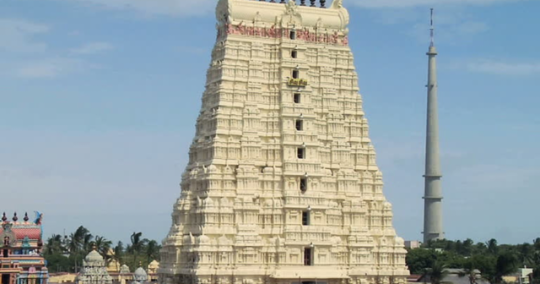
Have you ever walked into a temple and felt an unexplainable energy around you? South India's temples are not just places of worship—they are living testaments to ancient engineering, artistry, and devotion.
🏛️ Hidden Fact: The Brihadeeswarar Temple in Thanjavur, built over 1000 years ago, has a massive granite dome weighing 80 tons—yet, there’s no clear record of how it was lifted! 🤯
🔱 Why Do Devotees Visit These Temples? ✨ Rameswaram Temple – The only temple where Lord Rama is believed to have prayed for Lord Shiva’s blessings. ✨ Meenakshi Temple – Known for its 33,000 sculptures and daily spiritual rituals. ✨ Srirangam Temple – The largest functioning Hindu temple in the world!
📖 Want to explore more divine secrets? Read our full story on [Temple Tales].
📸 Drop a comment! What’s the most fascinating temple you’ve ever visited?
0 notes
Text

🏛️ नागर शैली – भारतीय मंदिर वास्तुकला की अद्भुत विरासत ✨"
नागर शैली भारतीय मंदिर वास्तुकला की एक प्रमुख शैली है, जिसे उत्तर भारत में विकसित किया गया। इसकी ऊँचे शिखर वाली संरचनाएँ, जटिल नक्काशी और भव्यता इसे खास बनाती हैं।
🔹 नागर शैली की विशेषताएँ: ✔️ ऊर्ध्वगामी शिखर (Rekha Deul) ✔️ अलंकृत मंडप और गर्भगृह ✔️ भव्य प्रवेशद्वार और तोरण
🌿 प्राचीन वास्तुकला और भारतीय धरोहर को संजोए रखें! 🌿
#नागरशैली#TempleArchitecture#IndianHeritage#AncientTemples#SpiritualDesign#VastuShastra#IndianCulture
0 notes
Text

Witness the divine beauty of Akshardham Temple in Delhi! 🕌💫 A masterpiece of architecture, culture, and spirituality that leaves every visitor in awe. Have you been here yet? 🤩
#akshardham#akshardhamtemple#spiritualjourney#spiritualvibes#divinebeauty#incredibleindia#templearchitecture#travelindia#heritage#peacefulvibes#mustvisit#exploredelhi#hindutemple#culturalheritage#traveldiaries#sacredplaces
0 notes
Text
Discovering Spiritual Serenity at the BAPS Hindu Temple in Abu Dhabi – A Symbol of Unity and Peace
Experience spiritual serenity at the BAPS Hindu Temple in Abu Dhabi, a symbol of unity, peace, and cultural harmony. This architectural marvel reflects India’s rich heritage and offers a divine space for devotion and reflection. A must-visit for spiritual seekers and culture lovers in the UAE. #BAPSTempleAbuDhabi #SpiritualJourney
#dubaitourvisa#bapstemple#abudhabi#hindutemple#spirituality#peace#unity#divine#templearchitecture#culturalheritage#sanatandharma#spiritualjourney#hinduculture#baps#sacredplace#abudhabitourism#uaeheritage#religiousharmony#indianculture#visitabudhabi#dubaitoabudhabi
0 notes
Text
History of Khajuraho Temple
Explore the rich history and stunning architecture of the Khajuraho Group of Monuments in this first episode! 🏛️✨ Discover the fascinating story behind these ancient temples, known for their intricate carvings and spiritual significance. Watch now to learn more about Khajuraho Temple's history in Hindi! (@uniquejournal)

#Khajuraho#KhajurahoTemple#IndianHistory#KhajurahoMonuments#AncientTemples#KhajurahoHistory#IndianTemples#TempleArchitecture#KhajurahoMadhyaPradesh#HinduTemple#KhajurahoGroupOfMonuments#TravelIndia#SpiritualIndia#WorldHeritageSite#UNESCOWorldHeritage#HistoryInHindi#KhajurahoKiKahani#MysteriousIndia
1 note
·
View note
Text



#WatRongKhun#WhiteTemple#temple#templearchitecture#chiangrai#thailand#travel#travelgram#travelphotography#fujifilm#fujifilmx20#pei3yanggoesto🇹🇭#white temple#temple architecture#architecturephotography
11 notes
·
View notes
Text




SHREE DASHAVATAR TEMPLE Project No.: P802 Blog: https://www.indianarchitect.info/2023/09/P802.html Web Site: https://indianarchitect.in/project-details/697 You Tube: https://youtu.be/_5j1bWZHcAk?si=hlv8srOI6sNULl_p Shorts: https://youtube.com/shorts/yfWiAMR4rAk?si=Dc61QvAeKz_XGKTm IA Greeting: https://iagreeting.blogspot.com/2025/02/P802.html 💬WhatsApp for Architecture Consultant https://wa.me/919414735075 Call Now: +91 8104487994
#IndianArchitect#BestArchitect#Place#Odisha#dashavataratemple#temple#dashavatar#dashaavatar#templearchitecture#dashavatarofvishnustories#vishnutemple#storyoflordvishnudashvatardashavatartemple#dashavtartemplevishnuavatar#ancienttemple#dashavtartampleinindia
1 note
·
View note
Text

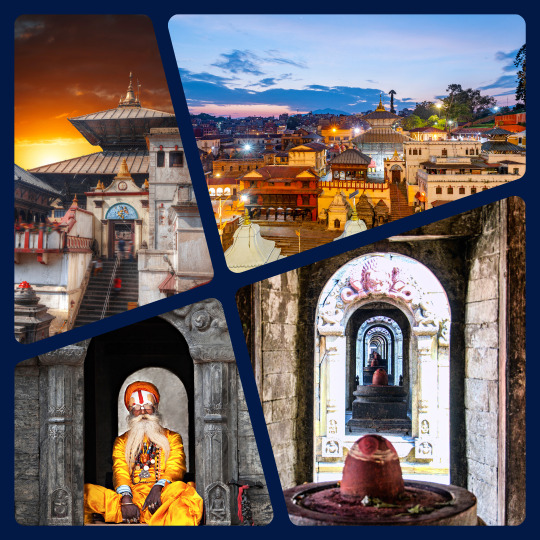
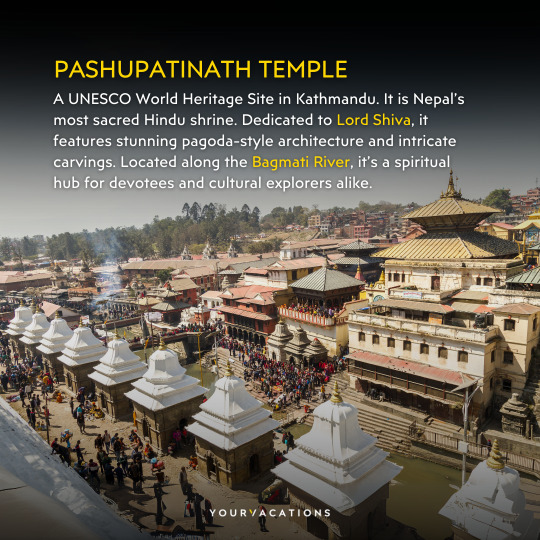
Pashupatinath Temple is a UNESCO World Heritage Site in Nepal. It is a sacred Hindu shrine dedicated to Lord Shiva. Located on the banks of the Bagmati River, it mesmerizes visitors with its stunning architecture, spiritual ambiance and vibrant rituals. This iconic temple is a must-visit for cultural exploration and spiritual tranquility.
#yourvacationsindia#PashupatinathTemple#NepalTourism#UNESCOWorldHeritage#SpiritualJourney#ExploreNepal#SacredShrine#LordShivaTemple#BagmatiRiverViews#NepalHeritageSite#CulturalExperienceNepal#TempleArchitecture#SpiritualNepal#HinduPilgrimage#DivineDestinations#NepalMustVisit#NepaleseCulture#HistoricLandmarkNepal#SacredSitesNepal#PeacefulGetaway#NepalTempleTour#travel#trousim
0 notes
Text
Timeless Legacy of the Great Cholas: A Testament to Art and Architecture
Timeless Legacy of the Great Cholas: A Testament to Art and Architecture The Chola dynasty, one of the most celebrated in Indian history, left behind a legacy that continues to inspire awe and reverence. Flourishing between the 9th and 13th centuries CE in southern India, the Cholas are remembered not only for their military conquests and efficient administration but also for their unparalleled…
#CholaDynasty IndianArt TempleArchitecture BrihadeshwaraTemple CulturalHeritage IndianHistory#BrihadeshwaraTemple#CholaDynasty#CulturalHeritage#IndianArt#IndianHistory#TempleArchitecture
0 notes
Text
Are Temples Built on Energy Centers? Scientific Proof Behind Their Location
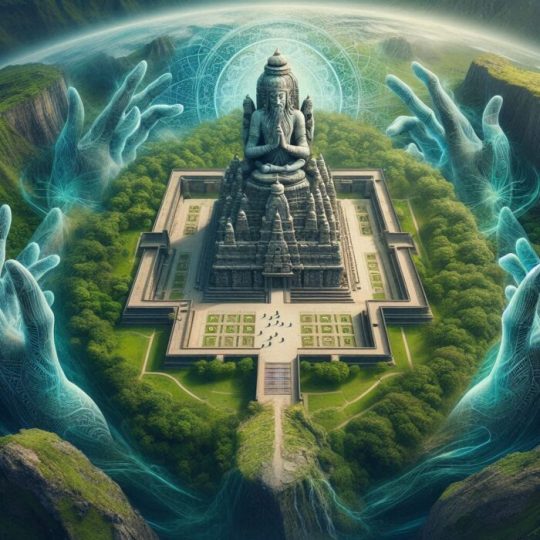
👉 Unveiling the Secrets of Temple Locations
Temples have stood the test of time, not just as places of worship but as centers of immense spiritual and cosmic energy. Across civilizations, from India to Egypt, from Mesoamerica to Greece, sacred structures have been built with meticulous precision, aligned with celestial bodies and natural energy grids. But what makes these temples feel so serene, powerful, and charged with an almost mystical force? Could there be a deeper scientific reason behind their placements? This article delves into the fascinating intersection of ancient wisdom and modern science, uncovering the truth behind temple locations. By decoding sacred geography, vibrational resonance, and geomagnetic fields, we aim to answer a question that has intrigued many for centuries: Are temples truly built on energy centers? 👉 The Ancient Mystery: Why Do Temples Often Feel So Powerful and Serene? Across India, devotees and visitors alike experience an undeniable sense of peace when entering a temple. This sensation is not merely psychological—it stems from a sophisticated interplay of natural energies, architectural design, and vibrational frequencies that impact the human body and mind. 🌟 The Subtle Energy Fields and Earth’s Geomagnetic Influence Temples are often situated on or near natural energy centers—regions where Earth's magnetic fields, ley lines, or underground water currents intersect. These areas are believed to be charged with high-frequency vibrations, which influence human consciousness, enhance meditation, and promote well-being. 🔹 Scientific Perspective: Researchers studying Earth's geomagnetic field have found that certain geographical locations emit higher levels of electromagnetic energy. Ancient civilizations may have intuitively understood these hotspots, aligning their sacred structures accordingly. 🔹 Example: Kailasa Temple, Ellora The Kailasa temple, carved from a single rock, aligns with natural geomagnetic currents, creating an environment that induces tranquility and heightened awareness. Some geologists suggest that the choice of this site was not random but based on natural energy mapping. 🌟 Why People Feel Energized After Visiting a Temple Unlike regular buildings, temples are architecturally designed to amplify cosmic energy. Every element, from the sanctum sanctorum (garbhagriha) to the tower (vimana), is constructed to create a high-energy environment. The very act of walking through a temple premises initiates a subtle transformation in the devotee’s bioelectromagnetic field. 🔹 Scientific Explanation: - The temple’s placement on energy nodes increases the intensity of geomagnetic fields. - Rituals like lighting camphor and offering flowers create a positive bioenergetic loop. - The high concentration of natural materials (granite, quartz, copper) enhances ionic balance, making temples a hub of vibrational harmony. Real-Life Example: Many devotees report feeling a tingling sensation, deep relaxation, or even a surge of energy when they meditate inside temple sanctuaries, especially in temples like Tirupati Balaji or Kedarnath. These experiences suggest a real interaction between human consciousness and energy hotspots. 👉 Could There Be a Deeper Scientific Reason Behind Their Locations? Temples are not randomly placed; they are built following meticulous calculations based on astronomy, sacred geography, and geomagnetic mapping. But how did ancient architects know where to construct these powerhouses of energy? 🌟 The Role of Sacred Geography in Temple Placement Sacred geography is the ancient science of identifying high-energy zones. In Hinduism, Vedic scholars mapped the land using cosmic alignments, river flows, and natural electromagnetic fields. 🔹 Examples of Temple Alignment with Earth’s Energy Grid: - Kashi Vishwanath (Varanasi) – Built at the confluence of multiple ley lines and underground water streams. - Rameswaram Temple – Positioned along the Tropic of Cancer, resonating with cosmic frequencies. - Meenakshi Temple (Madurai) – Analyzed to have geobiological advantages due to underground crystal formations. 🌟 Ley Lines and Earth’s Electromagnetic Network Many sacred sites across the world, including Indian temples, align with ley lines—hypothetical energy channels crisscrossing the planet. 🔹 Scientific Research: Studies by geophysicists indicate that ancient structures, from the Great Pyramids to the Konark Sun Temple, were built on intersections of these energy lines, maximizing geomagnetic influence on human physiology. 🔹 Modern Studies on Bioelectromagnetic Interaction: - A 2019 study on ancient temple architecture found that certain temple locations exhibit unusually high Schumann resonance (Earth’s natural frequency). - Higher Schumann resonance is linked to mental clarity, deep states of meditation, and enhanced intuition. Temples are more than places of worship—they are energy amplifiers, meticulously placed to tap into Earth's energetic blueprint. 👉 Exploring the Intersection of Ancient Wisdom and Modern Science This article serves as a bridge between traditional knowledge and contemporary scientific validation. By unraveling the truth behind temple placements, we hope to shed light on how these sacred spaces can: 🌟 Enhance Human Consciousness: Temples help synchronize brain waves with natural frequencies, promoting mental peace. 🌟 Balance Environmental Energy: They act as stabilizers for geomagnetic anomalies, creating a bioenergetic equilibrium. 🌟 Offer Healing Benefits: Temples are now being studied for their potential in alternative medicine and vibrational therapy. 🌟 Practical Implications: What We Can Learn Today The principles behind temple placement are not just relics of the past—they can be applied to modern urban planning, holistic health, and environmental sustainability. 🔹 Energy-Efficient Architecture: Using natural materials and cosmic alignments for building sustainable structures. 🔹 Wellness and Meditation Centers: Reviving ancient principles for mental well-being in cities. 🔹 Geo-Spiritual Mapping: Utilizing sacred geography for ecological balance and tourism. Final Thought: If we start viewing temples not just as religious monuments but as scientific marvels of energy engineering, we might unlock profound insights into human consciousness and planetary healing. ✅ Temples are built on high-energy zones, aligning with geomagnetic fields and cosmic patterns. ✅ Scientific studies validate the role of temple architecture in influencing human bioelectromagnetic states. ✅ Ancient wisdom on sacred geography can revolutionize modern urban design, healing spaces, and energy-efficient construction. Let’s rediscover the wisdom behind temple placements and integrate it into modern science for a better world!
👉👉 The Concept of Sacred Geography
Throughout history, sacred geography has played a pivotal role in the placement of temples, pyramids, and megalithic structures across the world. This ancient knowledge is based on the idea that the Earth is not just a physical entity but a living system of energy grids, ley lines, and vibrational hotspots. By understanding and harnessing these natural forces, civilizations have created powerful spiritual centers that influence human consciousness, healing, and even socio-economic prosperity. The concept of sacred geography is deeply rooted in both spiritual traditions and emerging scientific studies that seek to decode why ancient cultures built their most revered sites in precise locations. Were they simply following religious customs, or did they have a profound understanding of the Earth’s natural energy flow? Let’s explore the intricate relationship between temple locations, Earth’s energy fields, and similar practices across ancient civilizations. 👉 Defining Sacred Geography: Understanding the Spiritual Mapping of the Earth Sacred geography is the study of specific locations on Earth that possess unique energetic properties, often referred to as power centers. These areas are believed to be naturally charged with higher frequencies, geomagnetic activity, and vibrational resonance that can affect the mind, body, and spirit. 🌟 Core Principles of Sacred Geography: 🔹 The Earth is crisscrossed with ley lines—invisible energy channels that link sacred sites. 🔹 Certain geographical locations are naturally high in geomagnetic activity, influencing brain waves and consciousness. 🔹 Temples, pyramids, and other structures amplify and harness these natural frequencies to create a spiritual experience. 🔹 Astronomical alignments and cosmic cycles play a key role in the positioning of sacred sites. 🌟 Evidence of Sacred Geography in India India’s ancient temple builders did not randomly select locations; they followed precise geomantic calculations based on Vedic knowledge, astronomy, and energy mapping. 🔹 Kanchipuram, Tamil Nadu – Known as a “City of Temples,” Kanchipuram’s layout aligns with cosmic patterns and geomagnetic nodal points. 🔹 Jagannath Temple, Puri – Positioned at an energy hotspot where geomagnetic field fluctuations have been scientifically observed. 🔹 Vaishno Devi Shrine, Jammu – Built within a natural cave at an altitude that corresponds to bioelectric field enhancement, promoting spiritual elevation. These temple locations suggest an ancient understanding of Earth’s vibrational energy, which modern science is only beginning to explore. 👉 Ancient Civilizations: Similar Practices in Other Cultures The concept of aligning structures with Earth’s energy is not unique to India. Ancient civilizations worldwide followed sacred geography principles, constructing their most significant spiritual and ceremonial centers in places that resonate with the Earth’s vibrational energy. 🌟 The Egyptian Pyramids: Geometric Resonance and Earth’s Energy The Great Pyramid of Giza is one of the most precisely aligned structures on Earth. It is positioned at the exact intersection of the longest line of latitude and the longest line of longitude—a fact that suggests intentional geomantic placement. 🔹 Electromagnetic Properties: Researchers have found that the Great Pyramid naturally concentrates electromagnetic energy in its chambers, particularly at the King’s Chamber, which is believed to act as an energy amplifier. 🔹 Ley Line Connection: The pyramid sits along a major ley line intersection, suggesting knowledge of Earth’s energy grid. 🔹 Geometric Harmonics: The angle of the pyramid’s sides aligns with natural energy flow patterns, much like Indian temple vimanas. 🌟 Mayan Temples: Cosmic Alignments and Vibrational Fields The Mayan civilization in Mesoamerica constructed pyramidal temples at locations that correlated with astronomical events and geomagnetic energy shifts. 🔹 Chichen Itza (Mexico): The temple is designed to resonate with the Earth’s vibrational frequencies. Scientists discovered that clapping at the base of the pyramid produces an echo resembling the call of the sacred quetzal bird, suggesting an intentional design to enhance sound energy. 🔹 Teotihuacan: Known as the “City of the Gods,” this site is positioned near underground water currents, believed to enhance bioelectromagnetic resonance. 🌟 Stonehenge: A Megalithic Energy Hub The arrangement of Stonehenge’s massive stones is not accidental—it aligns with solar and lunar cycles, as well as Earth’s geomagnetic grid. 🔹 Energy Mapping Studies: Some scientists propose that the stones act as electromagnetic conductors, channeling Earth’s natural energy. 🔹 Healing Properties: Certain frequencies measured at Stonehenge suggest it may have been used for ritualistic healing—a concept echoed in Hindu temples where temple bells, mantras, and chants alter human vibrational states. These examples from ancient civilizations highlight a universal knowledge of energy centers and sacred geography, reinforcing the idea that temples are not merely places of worship but are designed to harness and amplify cosmic energy. 👉 Why Temples? The Belief That These Structures Harness Earth’s Natural Energy In Hinduism, temples are not just architectural marvels—they are cosmic energy transmitters. The principles behind their placement align with both spiritual wisdom and scientific research. 🌟 Temple Energy and the Human Body Just as sacred geography maps the Earth’s energy, our bodies also have energy centers (chakras) that interact with these frequencies. 🔹 Garbhagriha (Sanctum Sanctorum): Positioned at the temple’s most powerful energy point, corresponding to the Earth’s natural energy grid. 🔹 Temple Towers (Gopurams and Vimanas): Act as cosmic antennas, attracting and amplifying energy from celestial bodies. 🔹 Pradakshina (Circumambulation): Walking around the temple energizes the devotee’s bioelectric field, syncing it with the temple’s vibrational resonance. 🌟 Scientific Studies on Temple Locations Several studies have attempted to measure the energy levels at ancient temple sites, revealing fascinating insights: 🔹 Electromagnetic Field Fluctuations: Scientists using electromagnetic sensors at sites like the Brihadeeswara Temple in Tamil Nadu detected unusual energy shifts in certain areas of the temple. 🔹 Schumann Resonance: Some Indian temples register resonance frequencies similar to the Schumann resonance (7.83 Hz)—the Earth’s natural frequency, which enhances brain function and meditation states. 🔹 Quartz and Granite in Temple Construction: The use of these materials enhances piezoelectric effects, where mechanical stress generates electrical energy, contributing to the temple’s energy amplification properties. 🌟 Why This Knowledge Matters Today Understanding sacred geography can revolutionize urban planning, energy-efficient construction, and mental well-being. 🔹 Modern Urban Development: Ancient cities were designed based on energy flow principles, something modern architecture lacks. 🔹 Wellness & Meditation Centers: Using temple-like structures in modern designs can enhance mental health and relaxation. 🔹 Eco-Spiritual Tourism: Reviving sacred geography principles can boost local economies and cultural preservation efforts. Temples are not just relics of the past but scientific and spiritual blueprints for harmonizing human life with natural energy fields. By rediscovering sacred geography, we may unlock new ways to enhance well-being, consciousness, and planetary harmony. ✅ Sacred geography is a global phenomenon—ancient cultures strategically built sacred structures based on energy flow. ✅ Scientific research supports the energy properties of temples, validating Vedic principles. ✅ Understanding sacred geography can transform modern urban spaces, promoting sustainability, mental health, and spiritual well-being. Let’s bridge ancient wisdom and modern science to create spaces that heal, energize, and inspire!
👉 👉 Energy Centers and Geopathic Stress: The Science Beneath Our Feet
Ancient civilizations were deeply attuned to the Earth’s energy systems, mapping the invisible yet potent forces that shape life. While modern science is still uncovering the mechanisms behind these forces, ancient cultures had already identified specific high-energy locations. These sites became the foundation for spiritual centers, from temples in India to pyramids in Egypt and beyond. But was this placement coincidental, or was there a deeper understanding of geophysical energy grids, ley lines, and geopathic stress zones? This section delves into the hidden energy architecture of the planet, the significance of temple placements, and how these locations may influence human consciousness, well-being, and even the environment itself. 👉 Ley Lines and Energy Grids: Mapping the Earth’s Invisible Energy Channels Ancient texts and modern research hint at an energetic framework underlying the Earth, akin to a nervous system. These networks, often called ley lines, are believed to be pathways of high-frequency energy, running through key spiritual sites across the world. 🌟 What Are Ley Lines? The term ley lines was popularized by Alfred Watkins in the early 20th century, describing straight alignments of ancient monuments, temples, and sacred sites. However, the concept itself is far older and appears across multiple cultures. Some key characteristics of ley lines include: - They connect natural power spots, such as mountains, caves, and water bodies. - They intersect at nodal points, creating high-energy centers. - They are associated with geomagnetic anomalies, affecting biological and psychological states. - Many ancient megalithic structures align perfectly along these grids. 🌟 Global Examples of Energy Grids & Sacred Alignments - The Great Pyramids of Egypt & Orion’s Belt The pyramids of Giza align with the constellation Orion, a phenomenon mirrored in temple architecture worldwide. - The Nazca Lines of Peru These massive geoglyphs, only visible from the sky, align with astronomical markers and possible earth energy channels. - The Sacred Line from Stonehenge to Mount Everest Some researchers suggest an energy-rich line runs from Stonehenge (England) through ancient European sites, passing through India, and extending to Mount Everest. - Machu Picchu & The Andes Grid The Peruvian citadel is placed on one of the most powerful ley line intersections, leading to speculation about energy utilization in Incan civilization. 🌟 How Ancient India Mapped Energy Grids Indian temple architecture was not random; it was meticulously planned based on cosmic and terrestrial energies. In Hinduism, the Earth’s energy grid is often correlated with Shakti Peethas (sacred energy centers) and Jyotirlingas (divine energy vortexes of Shiva). - The Navagraha Temples (dedicated to planetary deities) are aligned based on astronomical coordinates and geophysical energies. - The 108 Divya Desams (Vaishnavite sacred sites) follow intricate cosmic placements connected to ley lines. - The Tirupati Temple, one of the most visited spiritual sites, is strategically placed on a geomagnetic hotspot, believed to amplify its spiritual resonance. 👉 Geopathic Stress and Vibrations: How Earth's Natural Energies Impact Living Beings Earth is not just a passive mass of land; it is alive with energetic currents, electromagnetic fields, and vibrational frequencies. Read the full article
#AncientTemples#ancientwisdom#DecodingTempleArchitecture#EarthEnergyGrids#EnergyCenters#EnergyMapping#SacredGeography#SpiritualScience#TempleArchitecture#TempleEnergy#TempleSecrets#VastuShastra#VibrationalHealing
0 notes